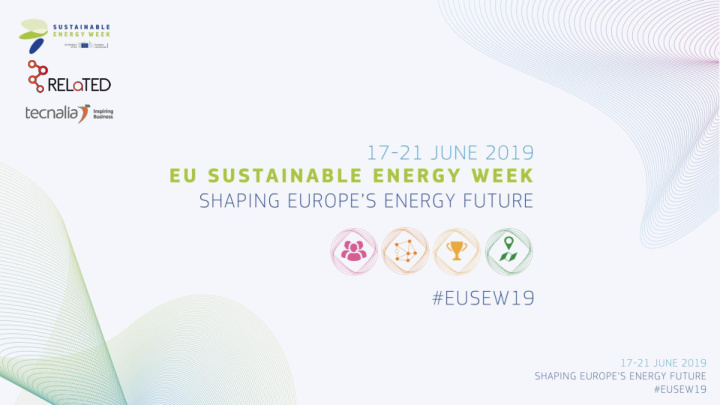



How to decarbonise district heating The RELaTED experience Roberto GARAY MARTINEZ RELaTED Project Coordinator Building Technologies Div, TECNALIA roberto.garay@tecnalia.com
District Heating • Energy efficient heating system with proven reliability • Supplies heating and cooling to millions of households in Europe • Large systems operated by professional crews • Infrastructure costs are shared
Need for updates/upgrades • Most DHs are based on fossil fuels • Boilerplants/CHP systems should be substituted y biogas, biomass, waste incineration systems. • Renewable energy systems such as Geothermal Heat Pumps, Large Scale integration of Solar Thermal Systems, etc. • Integration of Industrial Waste Heat into Open DH concepts
Need for updates/upgrades • Distribution temperatures (70-100ºC) need to be lowered • Reduce distribution loss • Improve integration of RES • Allow for extension to areas with lower urban/heat load densities
Challenges • EPBD • Building renovation will reduce its heating load by ~2%/year • New buildings will be constructed to meet NZEB • Stability of DH network • Non-continuous production facilities (Solar Thermal, etc.), and dynamic energy costs (Heat Pumps) • Security of supply of Fossil Fuels (long-term price scenario)
Routemap • Improvement of performance • Reduced Distribution Temperature. • Short term: network loss reduction • Long term: Reduction of heat production temperature • Continuous commissioning of substations. • Short term: Early repair of failures • Long term: Substitution of lower performing substations • Long term: Facilitation of further Temperature reduction
Routemap • Reduced Carbon Intensity • Industrial waste heat purchase (>0,5MW) • Integration of Large Solar Thermal plants • Connection of Building Integrated Solar Thermal systems into the DH • Conversion of cooling systems (supermarket, space cooling) into dual function systems
Routemap • DH stability • Reduced carbon intensity -> Reduced import dependency • Thermal storage -> Higher fraction of RES (@ lower electricity costs) • Long term assessment of energy transitions to ensure profitability of the system
RELaTED Technologies • Improvements @ Building Level for an improvement @ DH scale • Building Integrated, DH-connected Low Temperature Solar Thermal Systems • Standardized concept of ST system with direct connection to DH. • Twice as much heat produced • DH-connected, Reversible Heat Pumps • Triple Function Substations
RELaTED Technologies • Improvements @ Building Level for an improvement @ DH scale • Building Integrated, DH-connected Low Temperature Solar Thermal Systems • DH-connected, Reversible Heat Pumps • Connection of high-temperature diffusion systems to low-T DH • Dual function heat pump when in cooling mode • Triple Function Substations
RELaTED Technologies • Improvements @ Building Level for an improvement @ DH scale • Building Integrated, DH-connected Low Temperature Solar Thermal Systems • DH-connected, Reversible Heat Pumps • Triple Function Substations • Allow the connection of solar systems and heat pump to the DH • Bidirectional heat supply • Functions: Heating, Cooling & Injection of ST heat.
RELaTED DH Networks Tartu, EE Vinge, DK Iurreta Belgrade ES SR
Next milestones • 19/20 heating season • Reduction of operational temperatures in TARTU and BELGRADE • Integration of industrial waste heat from 2 producers. • 20/21 heating season • Integration of RELaTED technologies in VINGE, BELGRADE and IURRETA • Additional waste heat producers integrated in TARTU
Thank You www.relatedproject.eu roberto.garay@tecnalia.com This project has received funding from the European Union’s Horizon 2020 research and innovation programme under grant agreement No 768567 This presentation reflects only the author’s views and the Agency and the Commission is not responsible for any use that may be made of the information contained therein
Recommend
More recommend